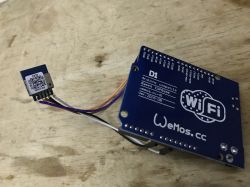Welcome,
I'm planning to set up a little "smart home" fab in my flat.
I am mainly concerned with on/off control of power sockets using the ESP8266 nodemcu v3.
The choice of ESP8266 nodemcu v3 here is not accidental as some time ago I already played with this wonder wanting to create a smart escape room.
I am a programmer so the software issue is taken care of. [I guarantee that it will be polished day by day] .
.
While looking for similar solutions I came across a ready-made one, but based on radio instead of WiFi, and also using ready-made "socket to socket" - sniffing the signal of the ready-made product and sending from its 'hardware' - so it doesn't help my idea at all.
My main problem is how to connect the ESP8266 to the socket, as I'm guessing that feeding the board 230V could grill it a bit....
The schematic would certainly be based on taking power from the socket for the board itself and conditionally passing the 'current' on - this is where I'm banging my head against the wall - can I ask colleagues to help me with specific components and possibly help me figure out the schematic?
Thanks in advance and best regards,
Filip
I'm planning to set up a little "smart home" fab in my flat.
I am mainly concerned with on/off control of power sockets using the ESP8266 nodemcu v3.
The choice of ESP8266 nodemcu v3 here is not accidental as some time ago I already played with this wonder wanting to create a smart escape room.
I am a programmer so the software issue is taken care of. [I guarantee that it will be polished day by day]
While looking for similar solutions I came across a ready-made one, but based on radio instead of WiFi, and also using ready-made "socket to socket" - sniffing the signal of the ready-made product and sending from its 'hardware' - so it doesn't help my idea at all.
My main problem is how to connect the ESP8266 to the socket, as I'm guessing that feeding the board 230V could grill it a bit....
The schematic would certainly be based on taking power from the socket for the board itself and conditionally passing the 'current' on - this is where I'm banging my head against the wall - can I ask colleagues to help me with specific components and possibly help me figure out the schematic?
Thanks in advance and best regards,
Filip





